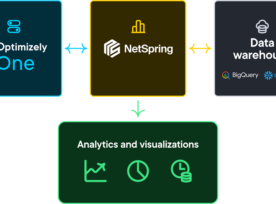In financial services, content isn’t just about telling your story — it’s about telling it right. Every blog post, product update, or social post is a potential compliance risk if not handled carefully. Regulatory bodies like FINRA, SEC, and GDPR aren’t known for leniency, and the cost of a misstep can be significant — fines, […]
David Lewis – Director - Optimizely CMS
Blogs from this Author
How Optimizely Grew from a CMS to a Composable Powerhouse
Before the term Digital Experience Platform (DXP) became a fixture in martech conversations, content management systems were the workhorses of digital strategy. Brands turned to CMS platforms like Episerver (now Optimizely) to manage web content, create publishing workflows, and maintain consistent brand identity online. But the evolution from CMS to DXP didn’t happen overnight — […]
Optimizely SaaS CMS Advancements
Delivering exceptional digital experiences requires a powerful, flexible, and scalable content management system. Optimizely’s SaaS CMS continues to evolve with new features and innovations designed to drive efficiency, enhance flexibility, and unlock greater value. Perficient, a trusted leader in digital transformation, has deep expertise in Optimizely solutions, helping businesses implement and optimize their CMS strategies […]
Creating Seamless Omnichannel Solutions with Optimizely
Let’s be honest: today’s customers expect a lot. They want to browse your website on their laptop, check prices on their phone, maybe ask a question on social media — and they expect it all to feel easy and connected. If your brand can’t keep up? They’ll notice — and they’ll move on. That’s why […]
11 Considerations for Building Optimizely CMS Content Types
One of the things that I love to see is developers that take an extra interest in the user experience for the content authors. Oftentimes, it is that extra attention to detail that makes a project successful. Creating content types that are friendly for editors is an essential aspect of managing a successful CMS. A […]
Seven Reasons for Google Optimize Customers to Move to Optimizely Experimentation
If you are a Google Optimize customer, then September 30th is an important date for your organization. Google Optimize and Optimize 360 will no longer be available after this date. Businesses that rely on Google Optimize will have to find a new solution and should start researching alternatives. Optimizely, the leader in experimentation, is the […]
Optimizely CMS: Content Delivery API – The Case of the Duplicate API Refresh Token
A couple of weeks ago I came across an interesting case where a mobile app was calling into the Content Delivery API to retrieve some data, but the calls would fail with a 406 HTTP Status Code. After some investigation, we found that the duplicate refresh tokens were being added to the system. Revoking the […]
Optimizely CMS 12 – Implementing a Reverse Proxy with YARP
The last few CMS implementations that I’ve done have required reverse proxies to surface external content. By the time I had completed my last CMS 11 project, I was a pro with reverse proxies. And then CMS 12 came and changed everything. CMS 12 moved to .Net Core on Linux web apps. This change removed […]
Optimizely Integration within Episerver – Part 2: Full Stack A/B Test
This is the second in a series of posts that look at some potential ways that the Optimizely and Episerver products can be integrated. In this post we will be updating the code that was created in the first article to include a Full Stack A/B test to determine if an increase in price would affect […]
Optimizely Integration within Episerver – Part 1: Full Stack Feature
With the rebranding of Episerver to Optimizely there have been several questions floating around about the Optimizely stack and how it can be used in a traditional Episerver project. This is a quick four part series where we look at some potential ways the products can be integrated. Here are the links to all of the […]
Episerver: Add a Copy Preview Link to the Navigation Pane
Recently a friend posted on the forums about the idea of being able to share a preview link to an item. While the solution outlined below may not meet his exact needs, it illustrates how easy it is to tap into Episerver plug-in areas to and add additional functionality to the editing interface. There are […]
Episerver Authentication with multiple Azure AD Instances
I recently came across a project where there was a slightly different twist for the site’s authentication needs. For this project the company had three different authentication scenarios that needed to be covered. Log in via a primary Azure AD tenant. This Azure AD instance was set up with application roles and the users were […]











